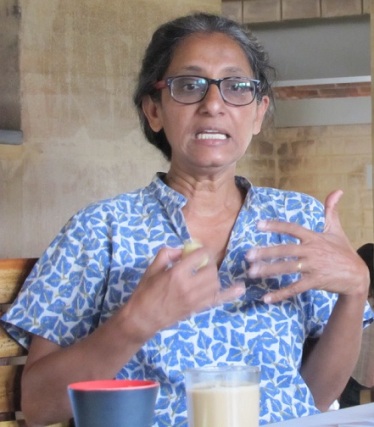Posts Tagged ‘Ecohomes’
Organisational Choices In Combining Commercial And Social
Indian cities such as Bangalore are facing massive challenges with water management, and in rural settings the nature of the challenges may differ, but water is also becoming a hugely important consideration in achieving healthy living environments.
Today is our last day in Bangalore, but time enough for a visit to one of the ground-breaking design firms in die field of water harvesting. They are called Ecohomes.
This architectural firm is based in a quiet part of Bangalore, with leafy streets and neat buildings. They are known for the buildings they design to make optimum use of materials available from the site itself such as clay for making bricks. Their designs are also based on environmentally friendly technologies such as eco-friendly sanitation methods and sun energy.
One of their main building design focus areas is in water harvesting for consumption. All their designs for households now include efficient water-collection into under-ground tanks, methods to ensure the harvesting of clean water only; and purifying and feeding of grey water back into the ground water reservoirs.
We meet Chitra, one of the founders of Ecohomes. She says that while the design of water and sanitation systems as part of architectural projects is fully paid for by their clients, Ecohomes realised that they would not be able to make an impact on the challenges in addressing broader water and sanitation needs, and specifically within rural communities. It is within this context that Ecohomes decided to launch a Trust to operate parallel to their business so that they could channel sponsorship from large corporations into the development of water harvesting and management systems for both urban and rural settings.
Marginalised woman and children from rural communities are the main benefactors of the trust’s work in introducing new ways of managing water and sanitation, which is why the trust is able to attract sponsorships. But, notes Chitra, while the logistical work of the trust is mainly subsidised through these sponsorships, their architects and engineers also contribute some of their time towards the work of the trust.
In combining a for-profit company with a not-for-profit trust, Ecohomes is able to have an impact on consumers who can pay for the services through home design projects, while also working with poorer communities where they are able to have an impact on the lives of rural woman and children with the help of sponsors.
This “dual model” creates two structures for social entrepreneurs to work with (a) consumer through commercial relationship, and (b) benefactors of development projects through sponsored developement projects. However, during several previous discussions the past week I noticed suspicion towards such dual model. It is some-times viewed as an under-hand practice for self-enrichment (not to say that Ecohomes is under suspicion of any such practices).
Some of the social entrepreneurs we met, like Aravind Srinivasan who runs an eye clinic, manage to combine both commercial and cross-funded work within one business structure. He has full control over their income streams, including the subsidised work. The greatest advantage of this “cross-subsidy” model is that the social entrepreneur stays in control of all the income streams and can therefore plan for a predictable future – it increases sustainability!
Others, like Narayaman Krisnan who runs a feeding programme, prefers a “sponsorship model” where private contributions, corporate donations and government grants are collected. Krisnan’s emphasis on financial transparency (he insistently showed us the receipts and financial records when we met) illustrates the vulnerability of being dependent on the continued support from external sources. Shifts in sentiment (even unfounded rumours) may lead to the sudden death of a much needed social impact project. This is why I believe all social entrepreneurs should explore new ways of doing things where they create predictable income streams.
The choice to follow a sponsorship model, cross-subsidy model or dual model is dependent on the circumstances and individual preferences of the social entrepreneur. Each of the three models have advantages, but I remain convinced that the future of social enterprise lies in combining various income streams and actively decreasing reliance on sponsorships. The social entrepreneur of the future will opportunistically combine various sources of finance so that over time they create predictable and sustainable cashflow.
Written by Christoff Oosthuysen
2012/01/06 at 20:37
Posted in India 2012, Study Trips
Tagged with best practice, Christoff Oosthuysen, Eco Homes, Ecohomes, India, social business, social enterprise, social entrepreneur, study, study trip, sustainability
